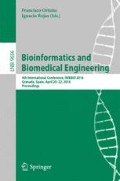Abstract
Computer models have become valuable tools for the study and comprehension of the complex phenomena of cardiac electrophysiology. However, the high complexity of the biophysical processes translates into complex mathematical and computational models. In this paper we evaluate a hybrid multicore and graphics processing unit numerical algorithm based on mesh adaptivity and on the finite volume method to cope with the complexity and to accelerate these simulations. This is a very attractive approach since the electrical wavefront corresponds to only a small fraction of the cardiac tissue. Usually, the numerical solution of the partial differential equations that model the phenomenon requires very fine spatial discretization to follow the wavefront, which is approximately 0.2 mm. The use of uniform meshes leads to high computational cost as it requires a large number of mesh points. In this sense, the tests reported in this work show that simulations of three-dimensional models of cardiac tissue have been accelerated by more than 626 times using the adaptive mesh algorithm together with its parallelization, with no significant loss in accuracy.
Access this chapter
Tax calculation will be finalised at checkout
Purchases are for personal use only
References
Bendahmane, M., Bürger, R., Ruiz-Baier, R.: A multiresolution space-time adaptive scheme for the bidomain model in electrocardiology. Numer. Met. Partial. Diff. Equ. 26(6), 1377–1404 (2010)
Biktashev, V., Holden, A.: Re-entrant activity and its control in a model of mammalian ventricular tissue. Proc. Royal Soc. of London. Ser. B Biol. Sci. 263(1375), 1373–1382 (1996)
Bondarenko, V.E., Szigeti, G.P., Bett, G.C., Kim, S.J., Rasmusson, R.L.: Computer model of action potential of mouse ventricular myocytes. Am. J. Physiol. Heart Circulatory Physiol. 287(3), H1378–H1403 (2004)
Hodgkin, A., Huxley, A.: A quantitative description of membrane current and its application to conduction and excitation in nerve. J. Physiol. 117, 500–544 (1952)
Hunter, P., Borg, T.: Integration from proteins to organs: the physiome project. Nat. Rev. Mol. Cell Biol. 4(3), 237–243 (2003)
Moreira Gomes, J., Alvarenga, A., Silva Campos, R., Rocha, B., Couto da Silva, A., Weber dos Santos, R.: Uniformization method for solving cardiac electrophysiology models based on the markov-chain formulation. IEEE Trans. Biomed. Eng. 62(2), 600–608 (2015)
Morgan, S., Plank, G., Biktasheva, I., Biktashev, V.: Low energy defibrillation in human cardiac tissue: a simulation study. Biophys. J. 96(4), 1364–1373 (2009)
Niederer, S.A., Kerfoot, E., Benson, A.P., Bernabeu, M.O., Bernus, O., Bradley, C., Cherry, E.M., Clayton, R., Fenton, F.H., Garny, A., Heidenreich, E., Land, S., Maleckar, M., Pathmanathan, P., Plank, G., Rodríguez, J.F., Roy, I., Sachse, F.B., Seemann, G., Skavhaug, O., Smith, N.P.: Verification of cardiac tissue electrophysiology simulators using an n-version benchmark. Philos. Trans. R. Soc. A: Math. Phys. Eng. Sci. 369(1954), 4331–4351 (2011)
Oliveira, R.S., Rocha, B.M., Burgarelli, D., Meira Jr., W., dos Santos, R.W.: An adaptive mesh algorithm for the numerical solution of electrical models of the heart. In: Murgante, B., Gervasi, O., Misra, S., Nedjah, N., Rocha, A.M.A.C., Taniar, D., Apduhan, B.O. (eds.) ICCSA 2012, Part I. LNCS, vol. 7333, pp. 649–664. Springer, Heidelberg (2012)
Oliveira, R.S., Rocha, B.M., Burgarelli, D., Meira Jr., W., Santos, R.W.D.: A parallel accelerated adaptive mesh algorithm for the solution of electrical models of the heart. Inter. J. High Perform. Syst. Archit. 4(2), 89–100 (2012)
Panfilov, A., Müller, S., Zykov, V., Keener, J.: Elimination of spiral waves in cardiac tissue by multiple electrical shocks. Phys. Rev. E 61(4), 4644 (2000)
Rush, S., Larsen, H.: A practical algorithm for solving dynamic membrane equations. IEEE Trans. Biomed. Eng. BME 25(4), 389–392 (1978)
Sachetto Oliveira, R., Rocha, B.M., Amorim, R.M., Campos, F.O., Meira Jr., W., Toledo, E.M., dos Santos, R.W.: Comparing CUDA, OpenCL and OpenGL implementations of the cardiac monodomain equations. In: Wyrzykowski, R., Dongarra, J., Karczewski, K., Waśniewski, J. (eds.) PPAM 2011, Part II. LNCS, vol. 7204, pp. 111–120. Springer, Heidelberg (2012)
Weber dos Santos, R., Plank, G., Bauer, S., Vigmond, E.J.: Preconditioning techniques for the bidomain equations. Lecture Notes in Computational Science and Engineering, vol. 40, pp. 571–580. Springer, Heidelberg (2004)
Southern, J., Gorman, G., Piggott, M., Farrell, P.: Parallel anisotropic mesh adaptivity with dynamic load balancing for cardiac electrophysiology. J. Comp. Sci. 3, 8–16 (2012)
ten Tusscher, K.H.W.J., Panfilov, A.V.: Alternans and spiral breakup in a human ventricular tissue model. Am. J. Physiol.: Heart Circulatory Physiol. 291(3), H1088–H1100 (2006)
Vigmond, E.J., Hughes, M., Plank, G., Leon, L.J.: Computational tools for modeling electrical activity in cardiac tissue. J. Electrocardiol. 36, 69–74 (2003)
Acknowledgments
This work was partially funded by CNPq, Capes, Fapemig, UFJF and Finep.
Author information
Authors and Affiliations
Corresponding author
Editor information
Editors and Affiliations
Rights and permissions
Copyright information
© 2016 Springer International Publishing Switzerland
About this paper
Cite this paper
Oliveira, R.S., Rocha, B.M., Burgarelli, D., Meira , W., dos Santos, R.W. (2016). Simulations of Cardiac Electrophysiology Combining GPU and Adaptive Mesh Refinement Algorithms. In: Ortuño, F., Rojas, I. (eds) Bioinformatics and Biomedical Engineering. IWBBIO 2016. Lecture Notes in Computer Science(), vol 9656. Springer, Cham. https://doi.org/10.1007/978-3-319-31744-1_29
Download citation
DOI: https://doi.org/10.1007/978-3-319-31744-1_29
Published:
Publisher Name: Springer, Cham
Print ISBN: 978-3-319-31743-4
Online ISBN: 978-3-319-31744-1
eBook Packages: Computer ScienceComputer Science (R0)

